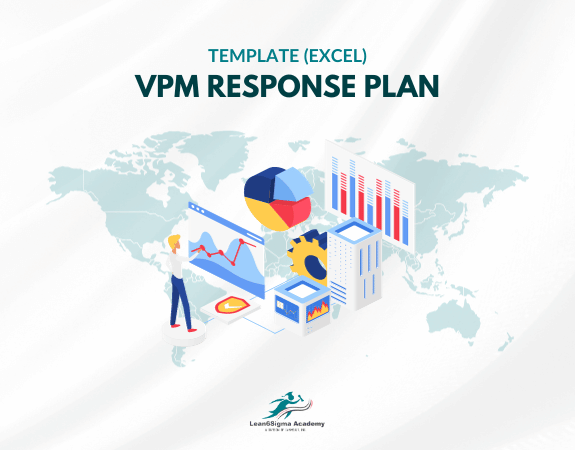VPM Response Plan Template
Visual Performance Management
Make good decisions!
Roadmap
Track, Analyze and communicate
Take action! Change it!
Here are common components typically found in a Visual Performance Management Plan Template:
Introduction:
Purpose: Clearly state the purpose of the Visual Performance Management Plan, which is to define how performance data will be collected, analyzed, and presented to support informed decision-making.
Scope: Define the scope of the plan, specifying the departments, teams, projects, or areas of the organization that will be covered.
Key Performance Indicators (KPIs): List and describe the specific KPIs or metrics that will be tracked. Include details such as the definition of each KPI, its relevance to organizational goals, and the responsible individuals or teams for each KPI.
Data Sources: Identify the sources of data for each KPI. This could include databases, software systems, manual data collection processes, surveys, and more.
Specify the frequency and method of data collection for each KPI (e.g., daily, weekly, monthly, manual entry, automated extraction).
Data Analysis and Visualization: Describe the methods and tools that will be used for analyzing and visualizing performance data. Common tools may include spreadsheet software, data visualization software, and business intelligence (BI) platforms.
Specify the types of visual representations (e.g., charts, graphs, dashboards) that will be used to communicate the data effectively.
Reporting and Communication: Define the reporting structure and frequency. Specify who will receive performance reports, when they will receive them, and how the reports will be distributed (e.g., email, online dashboard).
Identify key stakeholders who should be kept informed about performance results.
Data Quality Assurance: Outline procedures for ensuring the quality, accuracy, and reliability of the data being collected. This may include data validation, data cleaning, and error correction processes.
Responsibilities and Roles: Assign responsibilities to individuals or teams involved in the performance management process. Clarify who is responsible for data collection, analysis, reporting, and decision-making.
Performance Improvement Strategies: Describe how performance data will be used to drive improvement efforts. This may involve setting targets or benchmarks, identifying areas for improvement, and implementing action plans.
Data Privacy and Security: Address data privacy and security considerations, especially if sensitive or confidential data is being collected and reported.
Documentation and Review: Establish a process for documenting changes, updates, and revisions to the Visual Performance Management Plan.
Specify how often the plan will be reviewed and updated to ensure its effectiveness.
Appendices: Include any additional resources, templates, or guidelines that are relevant to the performance management process.
A Visual Performance Management Plan is a strategic tool for organizations to systematically track, analyze, and communicate performance data to support decision-making and continuous improvement efforts. It helps ensure that performance information is accessible, reliable, and actionable for stakeholders across the organization.
Get it now!

0 Reviews
Riaan is a dynamic leader, coach, facilitator, Lean Six Sigma Master Black Belt with over 20 years of hands-on experience driving business results. Riaan is highly skilled and has worked across diverse industries internationally. With a degree in Chemical Engineering, Riaan started in the major breweries and bakeries in South Africa and was so dedicated to his work that he was often known to take his work home with him.
